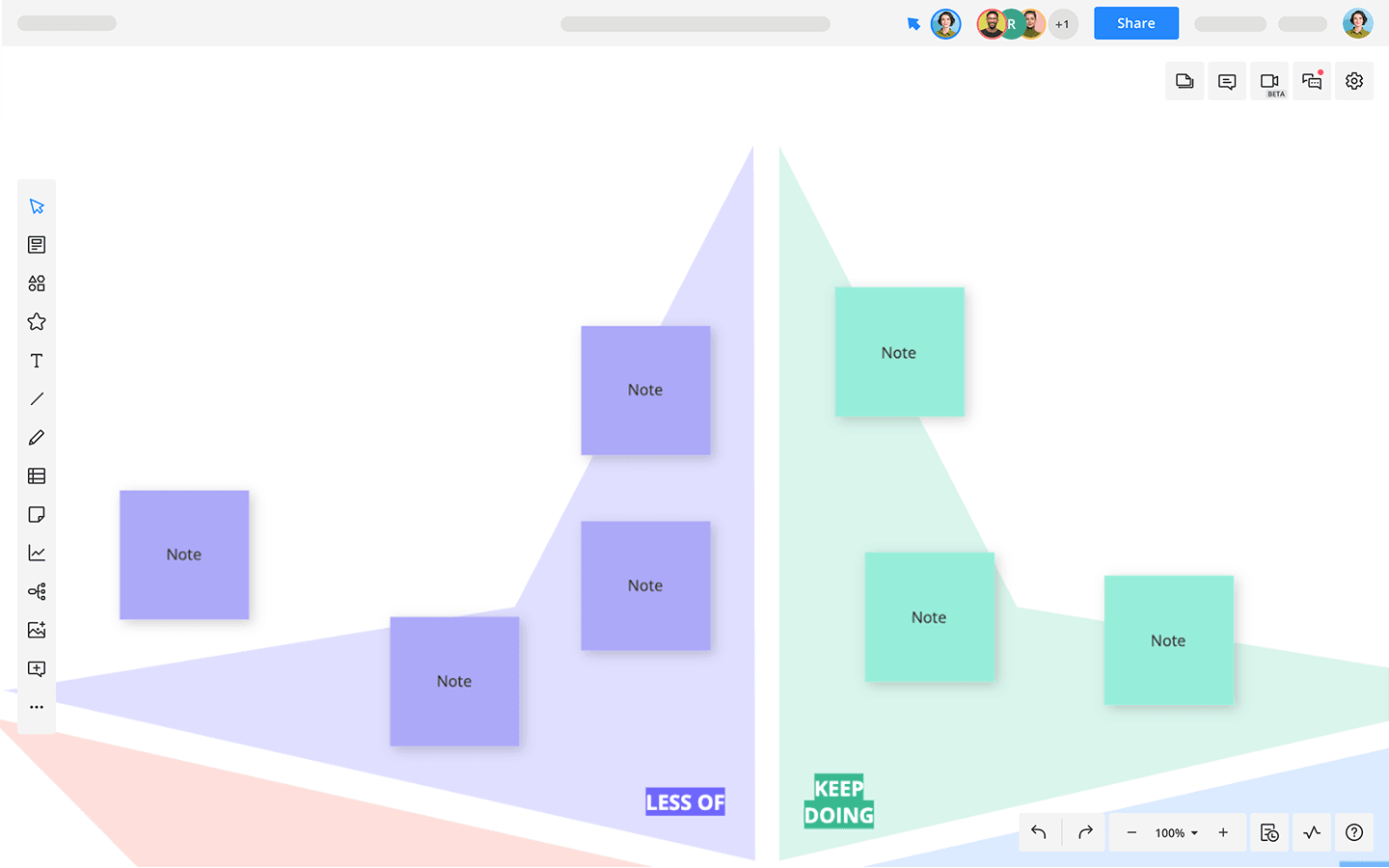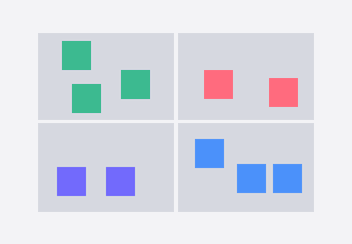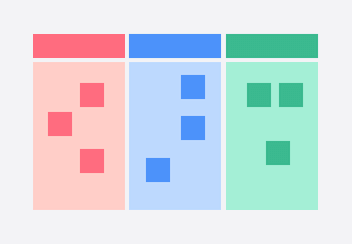- All templates
- Meeting & Brainstorming
- Starfish Retrospective
Starfish Retrospective

Uses of Starfish Retrospectives
A starfish retrospective is an Agile project management tool for improving a project or process. Each contributor gives feedback on how well the workflow is going, and the team uses this discussion to make a list of actions to implement.
Here’s what each section of the retrospective diagram means:
- Keep doing – positive aspects of the project that should continue as-is
- More of – positive aspects of the project that should be increased
- Start doing – new ideas/processes that should be implemented
- Stop doing – negative aspects of the project that should be eliminated
- Less of – project elements that are useful or necessary in moderation
With Cacoo, your team can collaborate in real-time to add sticky notes to each section. At the end of the exercise, you can quickly assess feedback to create action items. Try it today!

How to create your own Starfish Retrospective
Start by opening the Starfish Retrospective in Cacoo.
Consider which aspects of the project help things run smoothly. Do these elements work well without any need for improvement? Using the sticky notes, list these items in the ‘Keep doing’ section.
Now, think about positive actions or processes you want to implement more often. List these items in the ‘More of’ section.
Next, fill in the ‘Start doing’ section with ideas for new processes or resources you want to implement in the project.
In the ‘Stop doing’ section, list negative aspects of the project that hinder progress or add nothing of value.
Finally, use the ‘Less of’ section to list aspects of the project that are beneficial but may become a hindrance if implemented too often. For example, meetings are necessary, but can become excessive and prevent real progress.


